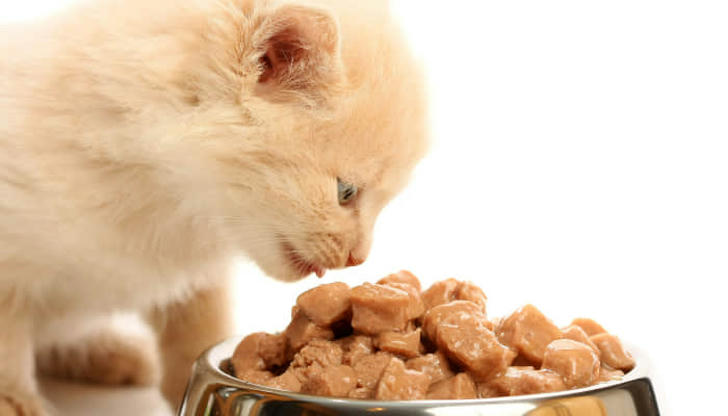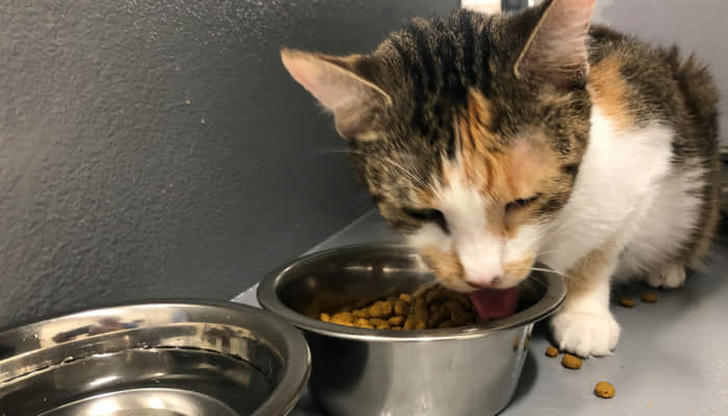Finicky Feline? Top Tips to Get Your Cat to Eat Their Food
Advertisement

Does your feline friend turn up their nose at mealtime? Here are 10 tantalizing tips with extra details to tempt your picky eater cat and get them excited about chow time.
1. Variety is the Spice of Kitty Life

Cats can get bored with the same food every day. Their discerning palates crave taste bud titillation! Experiment with different flavors like chicken, salmon, or turkey, and textures like pate, chunks, or shredded in both wet and dry food to find what your cat fancies. Rotate flavors every few feedings, but be sure to introduce new foods gradually. A slow transition over several days helps their digestive system adjust and reduces the risk of stomach upset.
2. Freshness Feline Finesse

Cats are scent-driven eaters, and nothing turns them off faster than stale, dried-out food. Keep food bowls clean with warm soapy water and rinse thoroughly after every use. Refill them with fresh portions regularly throughout the day, especially for wet food which can dry out and lose its appeal. Discard uneaten food after 20-30 minutes to avoid spoilage and the development of unappetizing odors. This ensures your finicky feline is presented with the most enticing aromas and textures at every mealtime.
3. Temp Me with Temperature

A quick zap in the microwave can release enticing aromas that pique your cat's interest. But be cautious! Heat wet food on low power for only 10-15 seconds to avoid scalding your cat. Letting dry kibble sit out for a few minutes allows some of the natural fats and oils to surface, enhancing the smell and flavor for your feline friend. Think about popcorn! The enticing aroma that draws you to the kitchen is similar to what happens to kibble when it releases its hidden scents. This olfactory stimulation can turn mealtime into an exciting treasure hunt for your furry gourmand.
4. Location, Location, Location

Sometimes, it's all about the ambience. Choose a quiet, calm location for your cat's food bowl, away from high-traffic areas or their litter box. Cats prefer a sense of security and privacy when attending to their culinary needs. Avoid placing the bowl near noisy appliances or curious house guests. Imagine yourself trying to enjoy a delicious meal in a chaotic environment – not very appealing, right? The same goes for your cat. Find a peaceful nook where they can comfortably dine without distractions.
5. Material Matters

Cats can be picky about their dinnerware! Experiment with different materials like stainless steel (easy to clean but cold), ceramic (visually appealing but heavier), or shallow plates (better for whisker-sensitive cats). Consider the shape and size too – wider, shallower dishes might be easier for flat-faced breeds to reach their food comfortably. Ultimately, find a dish that's easy to clean, aesthetically pleasing to you, and comfortable for your cat to use.
6. Pre-Meal Pounce

A 5-10 minute pre-meal play session can be a game-changer! Simulate your cat's hunting instincts with a feathery toy, mimicking prey movements to get them stalking and pouncing. This burst of activity increases their appetite and makes them look forward to the "catch" – their food! Ending playtime with praise and a small treat creates a positive association between playtime and mealtime.
7. Flavorful Finishes

For an extra flavor boost, consider adding some tempting toppers to your cat's food, but remember moderation! Crumble a small amount of their favorite treats (no more than 10% of daily calories) for added texture and flavor. Cooked salmon or tuna flakes (high in fat, so limit them!) can be a delightful treat. A drizzle of warm, low-sodium chicken or fish broth adds moisture and enticing scents to dry kibble, especially helpful for senior cats who may prefer softer food. Experiment with different toppers to see what your finicky feline fancies!
8. Hydration Station

Dehydration can lead to decreased appetite. Ensure your cat has access to fresh, clean water throughout the day. Consider a water fountain – the sound of bubbling water can attract them to drink more. Place multiple water bowls in areas where your cat spends a lot of time, and try using ceramic or stainless steel bowls instead of plastic if they seem to dislike the material. By providing fresh, enticing water options, you can encourage them to drink more and potentially improve their appetite.
9. Hand-Feeding for Fussy Felines

Hand-feeding can create a positive association with mealtime for attention-craving cats. Sit with your cat in a quiet, comfortable location and offer them small pieces of food from your hand, speaking in a soothing voice and praising them as they eat. This one-on-one attention builds trust and makes mealtime a rewarding experience for both of you. Be patient – some cats may take longer to warm up to the idea. Don't force them to eat if they seem disinterested, but offer food consistently during their regular mealtimes.
10. Routine Reigns Supreme

Cats thrive on routine. Establishing consistent feeding times and sticking to them as much as possible can significantly improve your cat's eating habits. Here's why:
• Internal Clock Calibration: Cats have internal body clocks that regulate their hunger pangs. Setting consistent mealtimes helps regulate these cycles and makes mealtimes predictable for your feline friend.
• Anticipation Builds Appetite: As mealtime approaches, your cat's natural anticipation can kick in, increasing their appetite. Sticking to a schedule builds this anticipation and ensures they are hungry when the food arrives.
• Free-Feeding Felines: If you free-feed dry kibble, set specific times to refresh the bowl throughout the day. This ensures there's always fresh food available but also encourages them to eat at designated times.
By creating a predictable feeding schedule, you can help your cat regulate their appetite and avoid problems like overeating or grazing throughout the day. Remember, consistency is key! Sticking to a regular routine will go a long way in improving your cat's eating habits.



